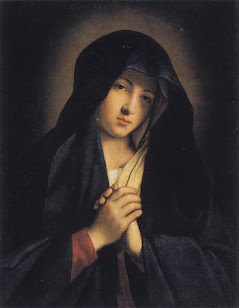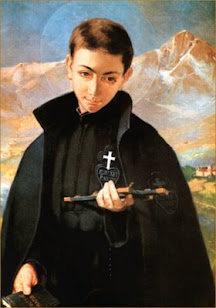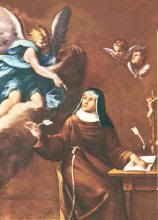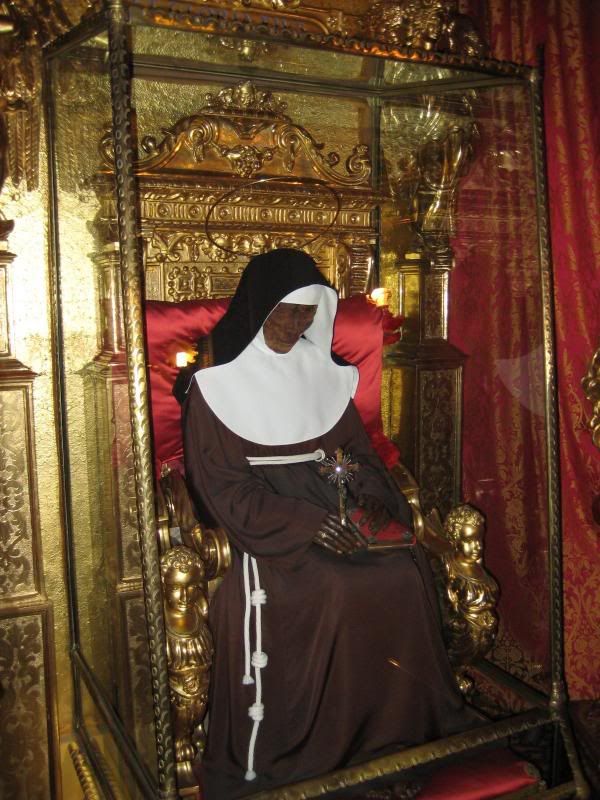March 9 commemorates the feast day of Saint Catherine of Bologna (1413-1463), virgin of the Church, mystic, and patron saint of artists and those who are tempted. Saint Catherine was born in Bologna, and appointed as the maid of honor to the daughter of the Marquis of Ferrara, for whom her father served as an aide. Catherine moved into the palace, and became best friends with her mistress, Margaret. Upon the engagement of Margaret, who wished Catherine to remain with her, Catherine instead entered the religious life. At age 14, she joined the third order of the Franciscans, who lived a semi-monastic life.
Eventually, the community to which Catherine belonged adopted the second rule of the Franciscans, joining the Order of the Poor Clares. There, Catherine lived in poverty and obedience, joyfully serving the Lord. However, Catherine felt that the rule was not strict enough in the community she served, and eventually was moved to a more austere community, where she reluctantly agreed to be Abbess.
Saint Catherine was graced with many spiritual gifts, beginning early in her religious life, and persisting until the end of her days. A mystic, she frequently experienced visions of the Blessed Mother, Christ at the hour of His crucifixion, and was tormented by visions and temptations of the Devil. All of these she passed along to her sisters, for their spiritual direction, and some she recorded in Latin, having been schooled in Latin at the court of the Marquis.
The most remarkable of her visions occurred on Christmas Eve. She had asked permission, at that time, to spend Christmas Eve alone in the convent chapel, intending to pray one thousand Hail Marys in honor of the Blessed Mother and the Nativity of Our Lord. As she later recounted, at approximately midnight, the dawning of Christmas morning, the Blessed Virgin appeared to Catherine with the swaddled baby Jesus in her arms. The Mother of God handed the Infant to Saint Catherine, who joyously held Him and kissed His cheek. Following that worship, He disappeared, but her heart was left changed forever.
 Under the direction of Saint Catherine, the community became known for austerity, service to the poor, and holiness. But Catherine, led by her joyous heart, was also a woman filled with joy, which she passed along to her sisters. They suffered gladly for Christ, eschewing wealth and comfort, but their hearts leapt and danced for joy. Saint Catherine wrote in her book Le sette armi spirituali (The Seven Spiritual Weapons):
Under the direction of Saint Catherine, the community became known for austerity, service to the poor, and holiness. But Catherine, led by her joyous heart, was also a woman filled with joy, which she passed along to her sisters. They suffered gladly for Christ, eschewing wealth and comfort, but their hearts leapt and danced for joy. Saint Catherine wrote in her book Le sette armi spirituali (The Seven Spiritual Weapons):Let every lover who loves the Lord
Come to the dance singing of love,
Let her come dancing all afire
Desiring only him who created her
And separated her from the dangerous worldly state.
Saint Catherine is also known as a talented artist and musician, her love and joy in the Lord spilling forth in whatever artistic medium she chose. (See picture of Mary and Jesus, Mother and Child, left, painted by Saint Catherine).
Saint Catherine strove to live a life of perfection. She instructed her community in the ways of holiness, including penance and suffering. In preparation for loving Christ, Catherine enumerated seven spiritual weapons of use to the faithful:
“Whoever from deep within her noble and zealous heart wished to take up the cross..., let her first take up the arms necessary for such battles...: first is diligence; second, distrust of self; third, confidence in God; fourth, memory of his passion; fifth, memory of one's own death; sixth, memory of the glory of God; seventh and last, the authority of Holy Scripture as it gives the example of Christ Jesus in the desert.”
While she was frail throughout her days, Catherine lived a relatively healthy life until shortly before her death due to a terminal illness. Upon her deathbed, her sisters observed that her aged face had been restored to the smooth youth of her teen years when she had entered the order. Buried without a coffin, her body was exhumed 18 days later, due to the overpowering sweet fragrance emanating from the gravesite. Found incorrupt, Saint Catherine was seated in a golden throne, in the small chapel of Cheisa della Santa, where she remains today. Her incorrupt body and face appear smooth and featureless, although somewhat blackened by the soot of 500 years of burning candles.
Saint Catherine’s search for perfection, her faith, and her piety are worthy of aspiring to. But more than that, the joy that Saint Catherine found, even in her suffering and death, is remarkable. She was confident in the love of Christ, confident that He would never stop caring for her, confident in His grace and mercy. During Lent, we often feel as if we should be morose and gloomy, fasting, abstaining, and enacting other mild forms of mortification and penance. Saint Catherine undertood these physical acts of repentence as well, but did so with a joyful heart, dancing and singing of the love of the Lord. This Lent, perhaps it is our turn to join in this glorious dance, hearts afire, desiring only Him who created us!
Day 68 of 365
Prayer Intentions: Heart of joy in our penance.
Requested Intentions: Safety of travelers (J); Improved family relationship with the Lord, using gifts for His glory (L); For the orphans of Saint Francis Xavier in India (Fr. B); For the health of a family member with Rett’s Disorder (C); For the restoration of hearing (L); For a restorative, faith-deepening Lent for all those who are struggling (L).
Special Intentions (Day 27 of 45-day Novena to Our Blessed Lady of Lourdes): The intentions of all those who read this blog, whether submitted or retained in the quiet of their hearts; Penance, Penance, Penance for sinners; For all those who are suffering.














0 comments:
Post a Comment
Thanks for leaving a comment. If you wish to submit a prayer request, however, please do so above, using the "Contact" tab.